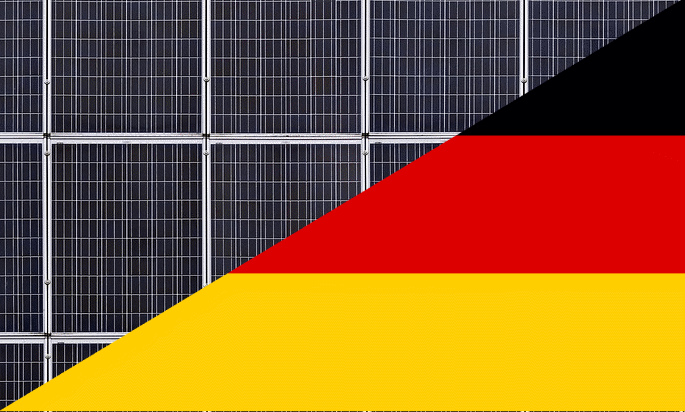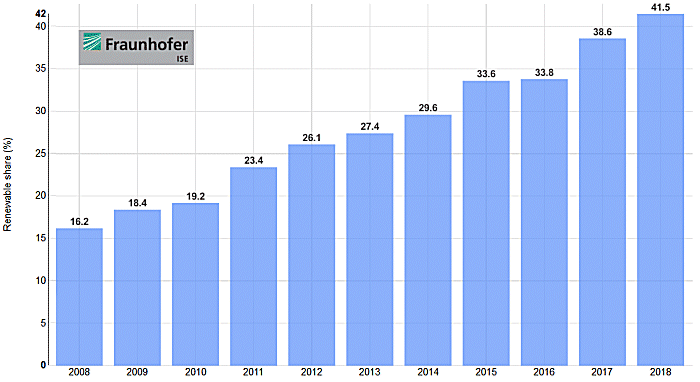
Solar panels image: anaterate
During the first half of this year, Germany’s renewables fleet cranked out more than 100 billion kilowatt hours (100,000 gigawatt hours) of electricity according to E.ON.
“This is an increase of around 33 percent within three years and shows that renewables are becoming increasingly important for our energy supply,” said Victoria Ossadnik, CEO of E.ON Energie Deutschland (translated).
Most of that electricity was provided by onshore and offshore wind turbines (~ 55 billion kWh), followed solar energy installations (~21 billion kWh), biomass1 plants (~20 billion kWh), and hydropower plants at around 8 billion kWh.
E.ON says the amount of electricity generated was equivalent to supplying all households in Germany with green electricity for a full year. That appears to have been based on average consumption of 2,500 kilowatt hours (2.5MWh) according to some reports.
In Australia, the average household consumes between 15 – 18 kWh a day; so over a year that works out to about 5.5 – 6.5 MWh annually. Germany’s renewables output for the first half of 2018 could have supplied electricity equivalent to between ~15.3 – 18.1 million Australian households requirements for a full year. That’s significantly more than the number of households in Australia (currently around 9.2 million).
According to Fraunhofer ISE’s Energy Charts site, renewables have averaged 41.5% of Germany’s electricity production so far this year, with a weekly range from 26.6% to 53.9%. Last year, renewables made up 38.6% of the country’s electricity production. Here’s how renewables’ share of electricity production has grown over the past 10 years.
Energy Charts indicates there is just under 44GW of installed solar power capacity in the country, 52.4GW of onshore wind and 5.3GW of offshore wind capacity. As for coal, the site notes approximately 25GW of black coal and 21GW of brown coal.
Electricity generated by solar panels totaled approximately 40,000 gigawatt hours in 2017 and covered approximately 7.2% of Germany’s net electricity consumption – including grid losses2.
Germany was the first country in the world to introduce solar feed in tariffs, which were implemented in 2004. Depending on system size, the current solar feed-in tariff for small rooftop systems is up to 12.20 €-cts/kWh (around 19c Australian at current exchange rates).
Footnotes
- The inclusion of biomass as a renewable source may have some wrinkling their noses. ↩
- Source: Recent Facts about Photovoltaics in Germany – Fraunhofer ISE ↩


 RSS - Posts
RSS - Posts



I know there is a place in Germany which recycles babies disposable nappies,and it would be very relevant here too. Every new mother signs up at the Town Hall,gets two big white plastic bags per week,takes them to the special skip,and they get turned into biogas and other good useful stuff. Every municipality has a little area lined with skips. You drive in,put your garbage carefully into the appropriate
Skip. A bit of care required,but everyone is happily doing it.
Maybe they could, using solar power, wash long lasting cloth nappies and use the water on the garden!